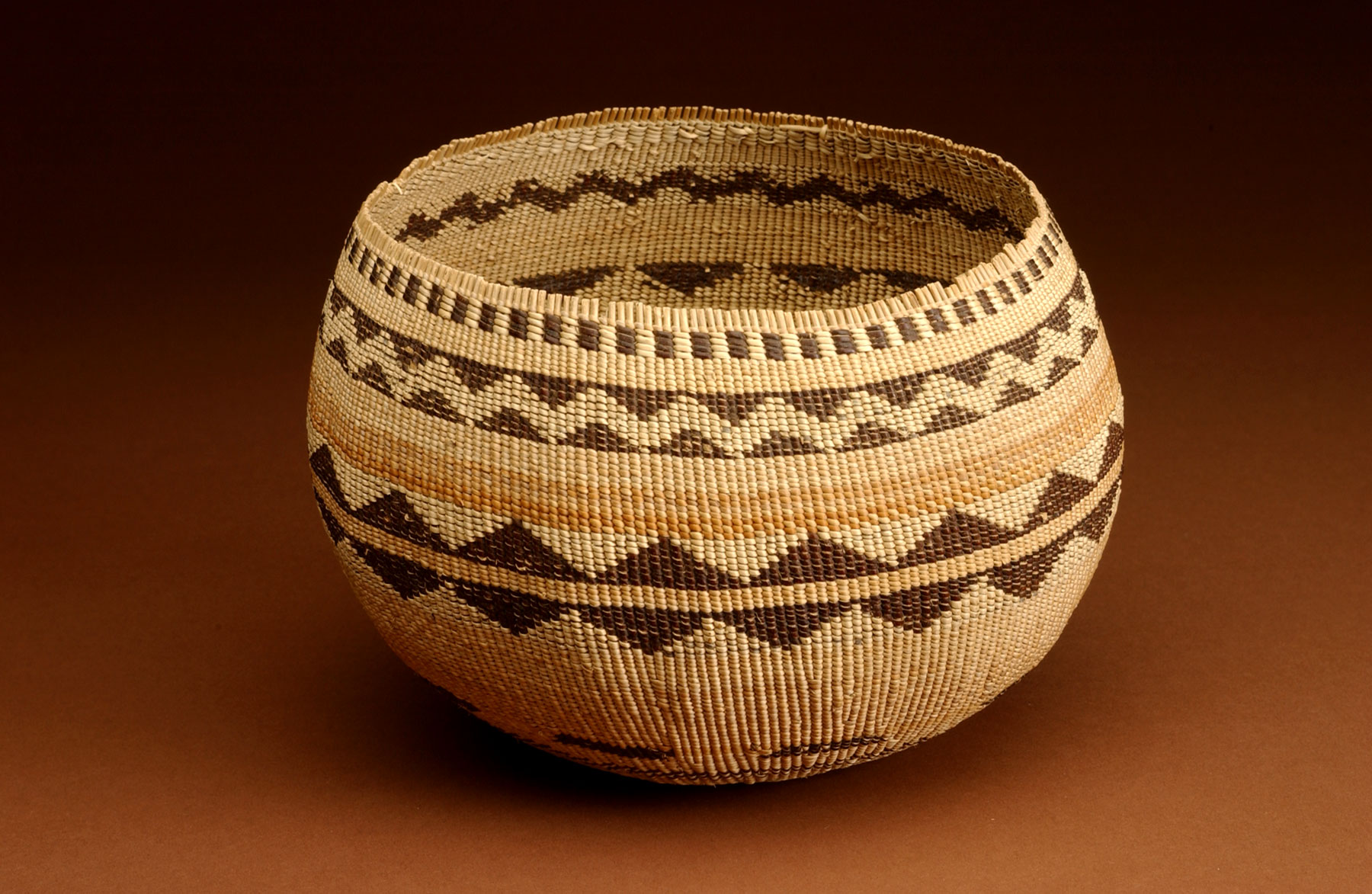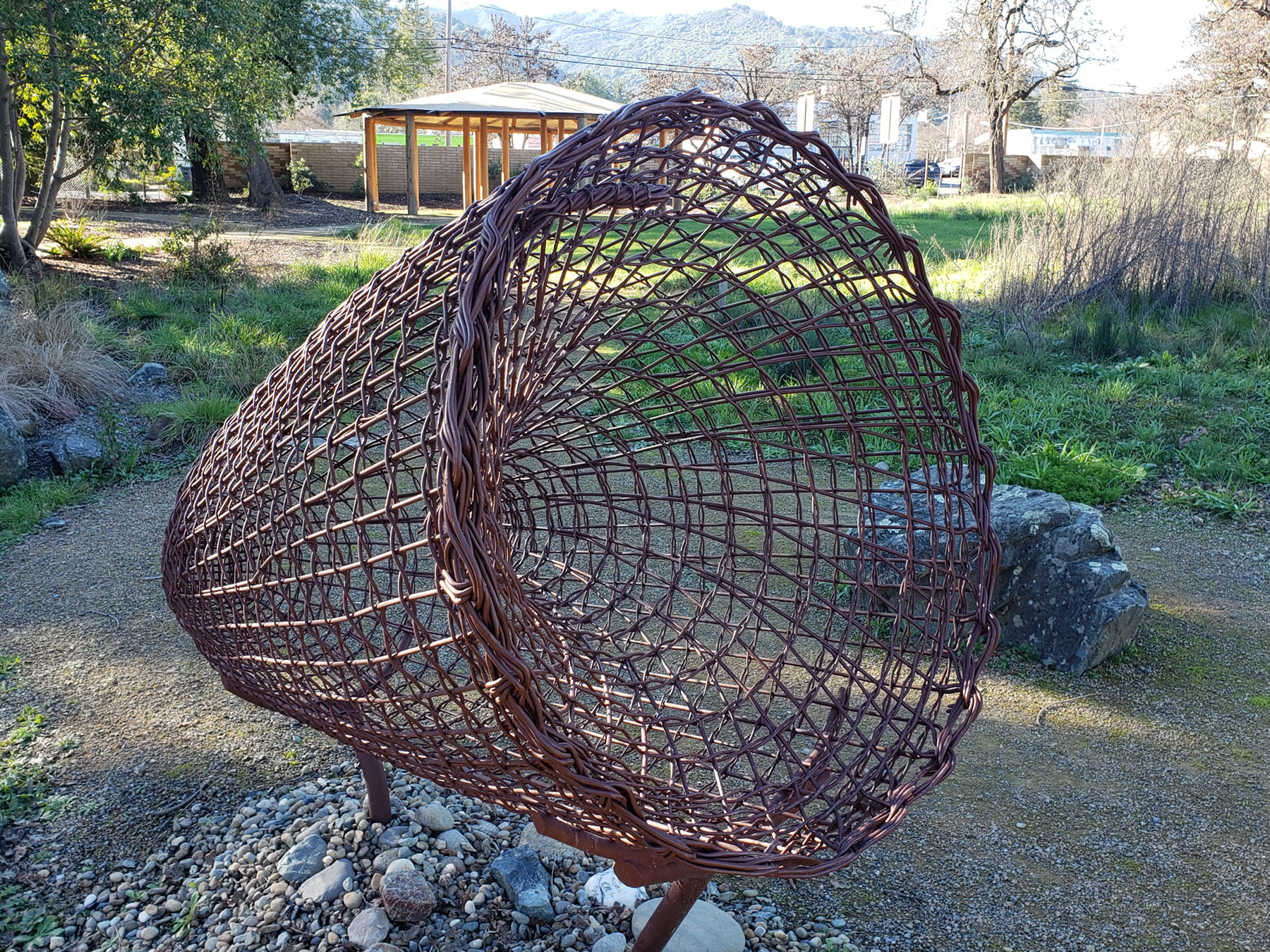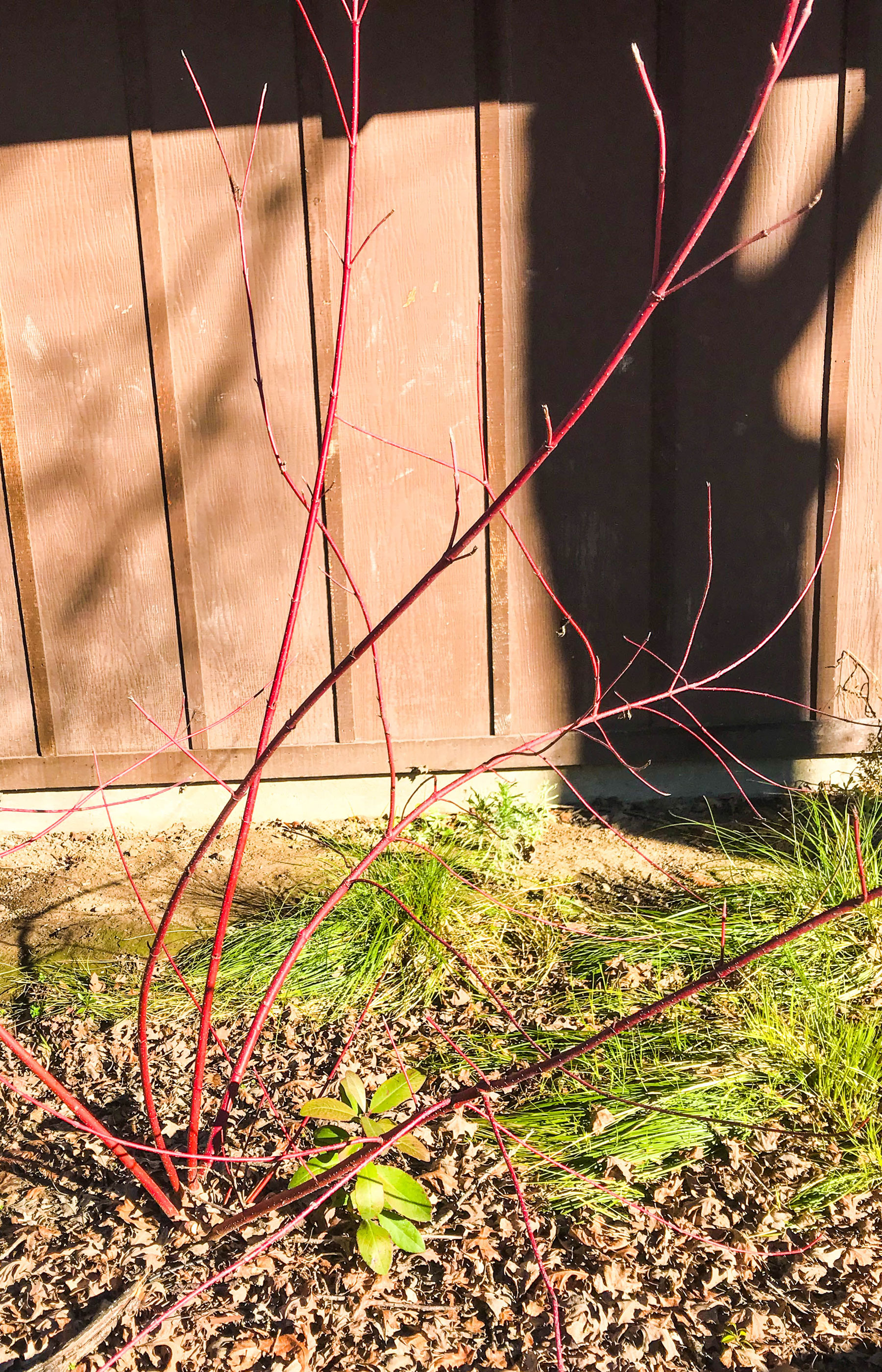Pomo Baskets

The Best Around the World and throughout Time
by Torrey Douglass
Imagine you’re a woodpecker. After a decent night’s sleep in the tree hollow you call home, you hop up onto the lip of its opening to greet the day. Something’s different. Where normally you’d launch yourself into the sky, there’s now a structure made of branches attached to the opening in your tree. But the holes in it are large to let in light and air, and there’s enough room for you to move around, so you’re not bothered.
You start exploring your surprising new addition, keeping your head down to watch your step as you move further into the structure. Eventually you notice that the walls are getting much closer, the sides narrowing in. To take stock of the situation, you poke your head up through one of the holes to get a look around—only to discover you can’t pull it back down. You’re caught.
The device that enabled your capture is a basket, specifically a hunting basket. As a woodpecker, your imagination is limited, so it’s unlikely you can appreciate that your entrapment was devised by a Pomo basket weaver, a member of a community generally understood, basketmaking-wise, to be the masters of their craft.
“The best baskets in the world are right here. More different types of techniques are used to make Pomo baskets here than around the world and throughout time.” So asserts Sherrie Smith-Ferri, former director and current Curator of Education and Exhibitions of Grace Hudson Museum in Ukiah. And she should know. Sherrie grew up in a Dry Creek Pomo family that included numerous generations of basketmakers and has seen over 10,000 Pomo baskets over her career. “After the first thousand, I thought I would have seen it all. I don’t think that anymore. I am always surprised by something new, a new expression of the weaver’s creativity.”
I was a little naïve when I first reached out to Sherrie for this article. This space is usually reserved for sharing a homesteading, farm, or craft skill, and I thought Sherrie could point me toward some local plants that can be harvested in the spring and used to make baskets. In retrospect, it was a little like asking a curator at the Louvre if she could recommend a good house painter.
Because baskets are made from natural materials that decay over time, it’s hard to say just how long people have been creating these multi-functional containers. The oldest known examples are 10,000 to 12,000 years old. Baskets can be found across continents and cultures as functional artforms made from local materials. So the idea that the world champion basket makers, across all space and time, lived and are still living right here in and around Mendocino County, is quite a revelation.
The Grace Hudson Museum has an excellent collection of Pomo baskets, the oldest piece made over 150 years ago. It was given to the the painter Grace Hudson's great-aunt, Mrs. Samuel Mewhinney, as a present from some of her Pomo friends. Born in Potter Valley and trained in San Francisco, Grace became known throughout the United States for her portraits and lifestyle depictions of the Pomo. A primary motivation for Grace's work was her belief that she was documenting a culture that would not survive far into the 20th century. Fortunately for all of us, she was wrong, but like all Native peoples, the lives of the Pomo were forever changed by the arrival of white settlers and the disease, violence, and economic upheaval they brought.
Prior to this cultural cataclysm, baskets had been an integral part of almost every facet of Pomo life. There were baskets for storing acorns, baskets that could hold water and baskets that could drain water, baskets for hunting and others for fishing. Baskets were made for holding infants, toasting edible seeds from native grasses, and cooking food. Some even caught woodpeckers. The museum’s display includes a set of half-size baskets young girls would use to mimic their mothers, as well as miniature versions to play with, dollhouse-style. Baskets were diverse, sturdy, and ubiquitous.
Some of the most highly prized baskets were gift baskets. They were exclusively decorative and often the most creative, incorporating shiny clamshell beads or colorful bird feathers. They served as social currency among Pomo and were used to strengthen relationships and familial connections.
While Pomo baskets are renowned for their artistry and sophistication, you don’t have to master their challenging techniques to sample the craft. A basket can be made out of all sorts of natural materials, and the basic principles aren’t difficult. During our conversation, Sherrie pulled up some online examples of baskets made from kelp that were loosely woven, imaginative and funky, if not particularly functional. Even the Pomo would sometimes make a basket that was quick and easy, designed to serve a purpose but not to last particularly long.
Those aren’t the type of baskets that solidified the Pomo weavers' reputation as masters of the craft, however. They are more known for the finely made coiled or twined baskets, made from the roots and branches of local plants. Willow branches, redbud shoots, and bulrush roots add their individual hues to the design. For the basket to be well made, each piece must be straight, smooth, and absolutely equal to its fellows. Nature’s creations are rarely so technically exact, so basket weavers will cultivate their source plants over years in order to encourage the kind of growth they need. Besides ensuring each piece is equivalent, the material also has to be dry, so today’s harvested material will take many hours of preparation and then six months to a year to dry out. Pomo basket making is not for those who seek immediate gratification.
By the late 1800s, the Arts and Crafts movement had become established in both Europe and America. Originating in England, the movement was a response against industrialization and the alienation that occurred from removing the human touch from the production of goods. Followers decried the identical clones mechanically churned out by factories as soulless and uninspired, and in response all things authentic, handmade, and native were suddenly very much in vogue. Any group seen as living close to nature was romanticized, and their crafts became highly valued. In Europe, fans of the Arts and Crafts movement looked to folk traditions to satisfy their nostalgia for pre-industrial living. Here in the States, art from Native cultures became the hot thing, including jewelry, blankets, and baskets.
The result was a resurgence of basketmaking among the Pomo, reviving a tradition that had been fading in the face of learning how to survive in their changed world. Whereas baskets once had been tools essential to the basic tasks involved in daily living (as well as gifts to honor important relationships), now they became both a means of making a living and a commodity, purchased by collectors and shipped all over the country. They went from production for internal use to production for external sale. As a result, that essential economic force—“the market”—literally shaped the baskets from that time forward. The original utilitarian baskets were not marketable, but the gift baskets sold like hotcakes, and the basket makers produced increasingly fine and sophisticated work to satisfy the market. Stitches per inch became a noted metric, with some of the more delicate examples exceeding 100 stitches per inch. Devoted craftspeople are forever pushing the limits of what’s possible, and the Grace Hudson Museum displays baskets that are small enough to be worn as earrings, as well as one so tiny it is kept in a test tube and could be mistaken for a seed.
While for much of the 20th Century Pomo baskets left the makers’ community as they were sold to collectors, today there’s new interest in basket-making among native weavers as an artistic endeavor and also as a link to past generations and cultural heritage. In other words, people are again learning how to make baskets to enjoy making baskets. For most weavers, it’s not a practical source of income—it would be impossible to charge enough to compensate for all the time and effort required to do it well. But it can serve as a creative pursuit that is deeply connected to the natural environment and that results in a thing of function and beauty.
For an easy introduction to basket making, look for preassembled kits at the Grace Hudson Museum’s gift shop. For hands-on instruction, local Pomo basket weaver Corine Pearce teaches basketry at the Redwood Valley Education Center periodically. In a recent PBS documentary about craft traditions in California, she says, “I like to teach basketry because it connects us all as humans.” When she was 11, Corine had a dream in which her grandmother encouraged her to become a basket weaver. She then devoted herself to mastering the art and went on to teach locally, and then throughout the U.S., Canada, Europe, and even Lebanon. She says, “Everyone already has a basket in them. I’m just helping to bring it out.”
To see the best local exhibit of Pomo Baskets, visit the Grace Hudson Museum in Ukiah, open 10am–4:30pm Wednesday through Saturday, and 12pm–4:30pm on Sundays.
431 South Main Street, Ukiah, CA 95482 (707) 467-2836 | GraceHudsonMuseum.org
Torrey Douglass is a web and graphic designer living in Boonville with her husband, two children, and a constantly revolving population of pets and farm animals.




